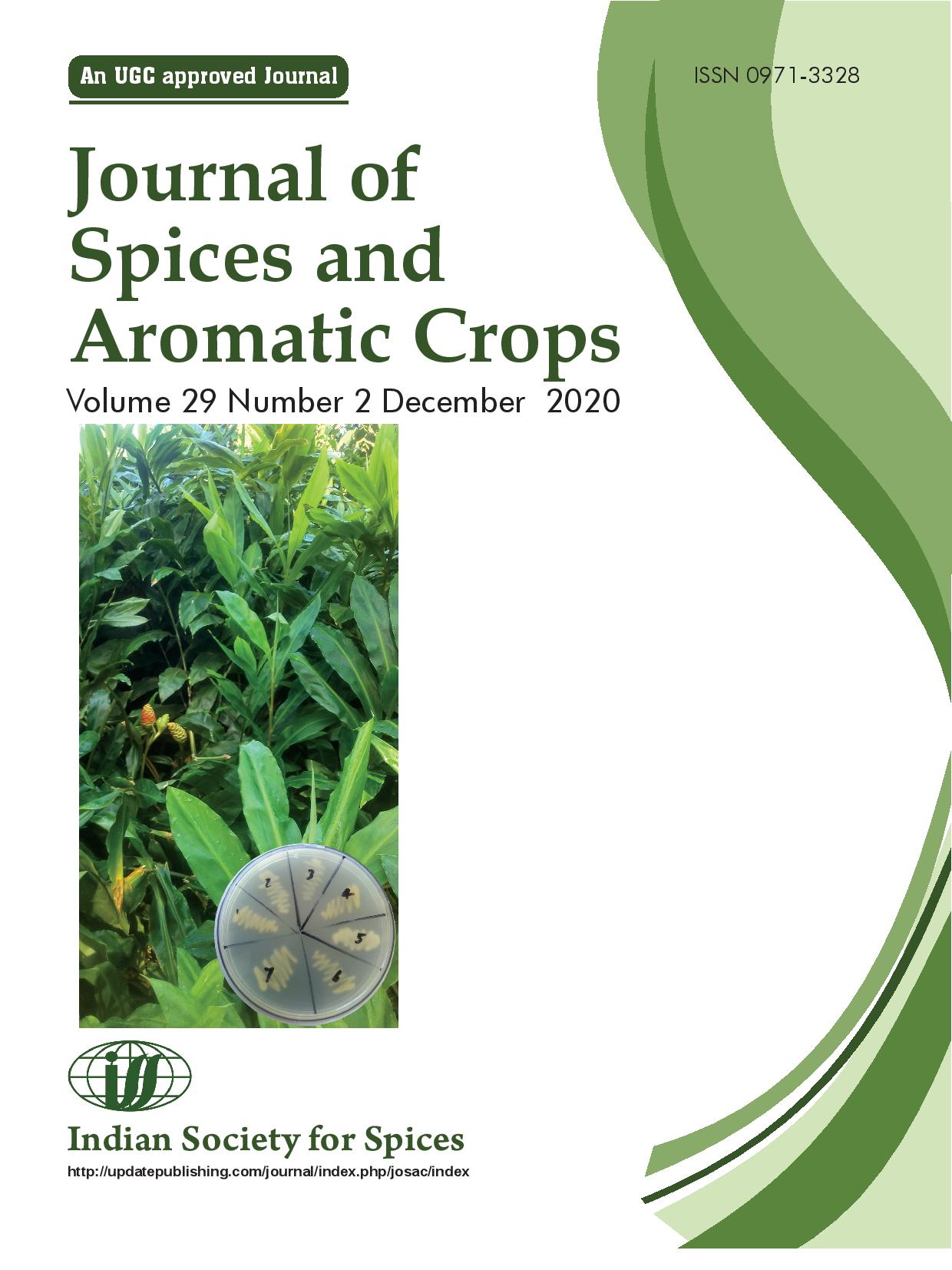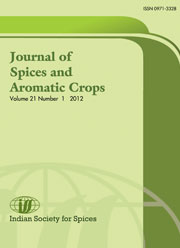Impact of paddy straw mulch on germination and growth of celery (Apium graveolens L.) seedlings and associated weeds in nursery
DOI:
https://doi.org/10.25081/josac.2020.v29.i2.6249Keywords:
Celery, germination, growth, mulch, nursery, weedsAbstract
A study was undertaken during three consecutive rabi seasons of 2014–15 to 2016–17 at the Research Farm, Department of Agronomy, Punjab Agricultural University, Ludhiana (Punjab) to determine the effect of paddy straw mulch load and retention time on the germination and growth of celery and associated weeds. The experiment was conducted in randomized complete block design (RCBD) with nine treatments viz., paddy straw mulch @ 4 and 6 t ha-1 with retention time of 15, 20, 25 days after sowing (DAS), full time retention (60 DAS), and control (without mulch). The results indicated that application of paddy straw mulch @ 4 or 6 t ha-1 significantly improved the germination of celery in nursery as compared to no mulch treatment but retention of paddy straw mulch beyond 20 days after sowing suppressed the celery seedlings adversely resulting in lowering seedling population as well as fresh and dry weight of celery seedlings. Application of paddy straw mulch @ 4 or 6 t ha-1 resulted in significantly lower density and dry weight of weeds as compared to control. Further, each successive increase in retention time of paddy straw mulch from 15 DAS to full time retention (60 DAS) through 20 and 25 DAS significantly reduced the weed population in celery nursery.
Downloads
References
Brar AS & Walia US 2010 Rice residue position and load in conjunction with weed control treatments-interference with growth and development of Phalaris minor Retz. and wheat (Triticum aestivum L.). Indian J. Weed Sci. 42: 163–167.
Cui H Y, Jin L B, Li B, Dong S T, Liu P, Zhao B & Zhang J W 2013 Effects of shading on dry matter accumulation and nutrient absorption of summer maize. Chin. J. Appl. Ecol. 11: 3099–3105.
Desai B B, Kotecha P M & Salunkhe D K 1997 Seeds Handbook. Marcel Dekker Inc Pub (pp. 280–285), New York, USA.
Gomez K A & Gomez A A 1984 Statistical Procedures for Agricultural Research. Edn. 2. John Wiley & Sons, New York.
Kumar R, Kumar J, Brar A S, Walia S S & Gill B S 2017 Effect of straw mulch and integrated nitrogen management on yield and quality of turmeric under North Indian plains. Indian J. Hort. 74: 240–244.
Lamia T A, Essam I W & Abdelazim Y A 2014 Effect of shade on seed germination and early seedling growth of Moringa oleifera Lam. J. Forest Prod. Indust. 3: 20–26.
Malhotra S K 2012 Celery. In: Peter K V (Ed.) Handbook of Herbs and Spices Vol 2, Second Edition (pp. 249–267). Woodhead Publishing Ltd., Cambridge UK.
Pramanik P, Bandyopadhyay K K, Bhaduri D, Bhaacharyya R & Aggarwal P 2015 Effect of mulch on soil thermal regimes-A review. Int. J. Agric. Environ. Biotech. 8: 645–658.









 .
.